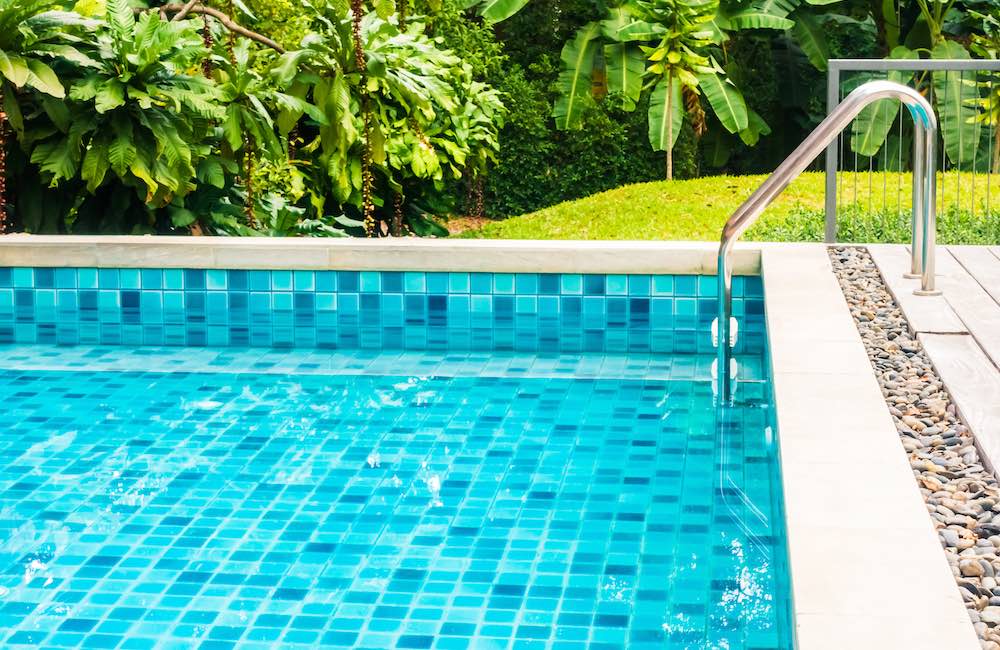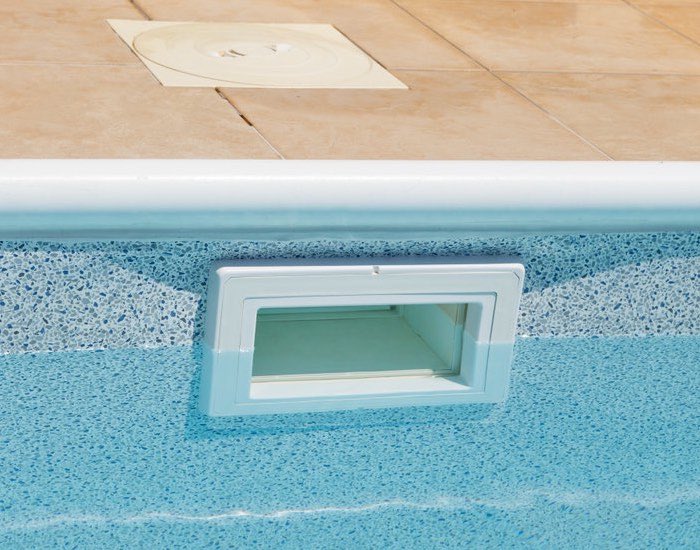How Much Water Evaporates From a Pool in Jacksonville ?

People often ask this question, usually because they’re wondering if the amount of water that’s disappearing from their pool is simply a normal amount of evaporation or if there’s a leak in their pool equipment. So, before delving into the question of how much water loss in a pool is normal, here’s a quick look why, after you fill your pool to the optimal amount, it doesn’t remain at that level.
Two of the reasons are water loss through backwash waste and splashing water outside of the pool. Although relatively small factors, they’re ones you’ll need to manage on an ongoing basis by regularly topping off the water in your pool.
Outside of that, the two main causes of lowering pool water levels are:
- Evaporation that’s greater in hot weather, especially when there’s a lack of rainfall
- A pool leak, especially if you’re losing more than two inches of pool water weekly
The question of how much water evaporates from a pool is an important one to ask, so that you can address a pool leak sooner rather than later. Read on to learn about the process of water evaporation and what’s a normal rate.
Pool Water Evaporation and Temperature
Water can and will evaporate over a broad range of temperatures—meaning, even cold water that hasn’t frozen. Any time that the water molecules at the surface of your pool are moving quickly enough, they’ll split from the other molecules and transform from a liquid into a gas. As the temperature increases, the evaporation rate increases because more molecules move quickly in higher temps. So, more water molecules will have the energy needed to become a gas (in other words, to evaporate).
Because the air has a limited capacity to hold liquid vapor, humid conditions will slow down the pool evaporation rate. In hot and humid weather conditions, pool owners have both conditions happening at the same time. Even taking that into account, with the hot and humid weather conditions here in Florida, you’ll typically see a higher pool evaporation rate than most other states. For a quick visual, look at this National Weather Service map. Darker green = more evaporation with Florida being a deep green hue on the map.
How Much Water Loss in a Pool is Normal?
First, you’ll need to know how much water your pool holds. This will help you monitor water loss, whether that’s occurring strictly through pool evaporation or also because of a leak. Knowing your pool’s water capacity is also important when deciding what support systems it needs to be sparkling clean and enjoyable when you swim.
To measure your pool size:
- Rectangle pools: Multiple the length (L) x width (W) x average depth (D) x 7.48. Multiplying L x W will give you the surface area of your pool; when adding in the depth, you’ll have the volume in cubic feet. Because one cubic foot can hold 7.48 gallons of water, this formula lets you know what your pool holds. Here’s an example. With a 15’ x 30’ pool that has an average depth of 5’, here’s the calculation: 15 x 30 x 5 x 7.48 = 16,830 gallons of water.
- Circular pools: They come with a different formula, starting with π r 2. Let’s say that your 4’ deep pool has a diameter of 10’ and a radius of 5’. This pool would have 2,349 gallons (3.14 x 52 = 78.5 of surface area x 4’ = 314 sq ft. x 7.48).
- Oval pools: Their formula is L x W x D x 5.9, which means that a 15’ by 30’ pool that’s, on average, 5’ deep, there would be 13,275 gallons of water (15 x 30 x 5 x 5.9).
What’s “normal” loss from those optimal levels will depend upon the climate. That said, as a general rule of thumb, losing a quarter of an inch of water per week can generally be contributed from normal pool water evaporation. Losing up to a half an inch may also be normal evaporation under some circumstances.
From the perspective of gallons, a 15 x 30 rectangular pool that loses a quarter inch of water per day will lose about 70 gallons. If you lose half an inch a day, that’s about 140 gallons.
There are pool water evaporation calculators that can help you to quantify how much water you’re losing, but you can also measure it directly. Use a tape measure or ruler and note the distance between the water’s surface and your pool deck. Write down the date and the amount. A week later, repeat the measurement at the same spot in your pool. Divide the distance by the time (seven days) and you’ll have your pool evaporation rate.
If you’re a customer of JOMO Pool Service and concerned about your pool losing too much water, we can help identify if your pool does indeed have a leak. Once a pool leak has been ruled out, you can then monitor how much evaporation takes place in your specific pool in certain temperatures. That can be more valuable than looking at national or even state averages because you’ll now have a benchmark that can serve as a warning sign if the number significantly increases. Another way to tell if there may be a problem: your water bills are unexpectedly rising and you can’t find a leak indoors.
 Topping off Pool Water
Topping off Pool Water
It’s important to regularly top off the pool to the appropriate level, something you can do yourself or have a pool company handle. Generally, you want to keep the water level between half way and two-thirds of the way up the skimmer. When the water levels are regularly topped off, this prevents too much air from being sucked into the pump and will reduce the strain on it and help to prolong its life.
If you fill up your pool with a garden hose using city water, you should talk to your utility company about their rates for this task and any relevant discounts. If the plan is to use well water, make sure that the well equipment is up to the task and has enough water for the job. Note that well water may contain minerals that can make balancing pool water more challenging. No matter how you top off your pool, you’ll need to regularly test and balance the water.
Signs of Leaks
So, if you’ve been monitoring the typical pool evaporation rate for your own situation, what should you do if the water loss seems higher, whether a small amount or to the point where you can verify significant changes in the water level?
Don’t automatically assume that more evaporation is taking place. This situation may well indicate a leak. Other signs to look for include:
- Wet/soft spots around the pool
- Cracks in the pool tile
- Standing water by the pump
- Algae growth (here’s more about when your pool is green or cloudy)
If you suspect a leak, it’s better to address it now before it becomes a bigger (more expensive) one. For help in Jacksonville, please contact us online or call 904-222-0809.
Regular Pool Maintenance
To protectively protect your pool against leaks and the need for expensive repairs, you’ll need to regularly clean and maintain your pool. Some people take on these tasks themselves while others would prefer to leave this to the professionals so that they can spend their pool time with friends and family.
JOMO Pool Service offers a choice of four pool cleaning plans to ensure we’ve got one to meet your needs and your budget—and we have a passion for pools and for serving our customers, which assures you of quality service. Our plans are:
- AquaJOMO: If you’d rather manage your own pool cleaning and maintenance and use professionals to handle your chemical use and pool balancing, this would be a good service for you.
- SparklingJOMO: If you actively maintain your own pool and would like to keep doing so, but would like an economical bi-weekly service to supplement what you’re doing, then this is an appealing plan.
- SparklingJOMO Plus: With this plan, you’ll receive comprehensive cleaning services, plus equipment checks, and water balancing 50 times a year.
- SuperJOMO: Looking for premier service for your Jacksonville pool? Then you’ll appreciate SuperJOMO! This includes all-inclusive weekly pool care, 50 times a year like in SparklingJOMO Plus—and also includes equipment warranties and replacement of pool maintenance items.
